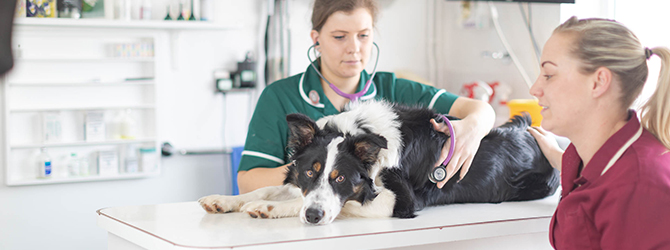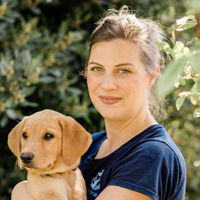Dog neutering: Signs your dog needs to be neutered
First Published: 30/11/2018
Last Updated: 15/04/2024
Neutering is the surgical process of removing reproductive organs to prevent your pet from being able to reproduce. Male dogs are castrated, and females are spayed. If you don't want your dog to reproduce, neutering is your best option
Deciding if you should neuter your dog is something all dog owners have to think about. Before making this choice, there are many things to consider, and knowing how it will affect you and your dog is essential. We've created this easy-to-understand article about dog neutering to help you learn all the important information.
Brief summary
- Neutering is a surgical procedure that prevents dogs from reproducing which involves castrating male dogs and spaying female dogs
- The surgery is relatively simple and is performed under general anesthesia. Male dogs have their testicles removed, while females have their ovaries and uterus removed
- Neutering offers several benefits, including the prevention of certain diseases and unwanted pregnancies
- There may be some temporary side effects and long-term considerations, such as weight gain and increased risk of certain cancers
- The timing of neutering depends on factors like the dog's breed and size
What is dog neutering?
Dog neutering is a common procedure that prevents dogs from having puppies. The op is much easier for dogs than it used to be, thanks to improvements in veterinary care. Since male and female dogs have different reproductive organs, neutering a male dog is different from spaying a female dog. Castration involves removing the testicles of a male dog, while spaying is the removal of the ovaries and uterus from females. By going ahead with this op, you can make sure your dog won't have, or father, any unexpected puppies.
How is a male dog castrated?
Your vet will make a small surgical incision in front of your dog's scrotum before removing the testicles and closing the incision. This op is performed under general anaesthetic and typically takes around 30 minutes. In some cases, if your dog has an undescended testicle(s), the surgery is a little more complicated, and they may need additional incisions.
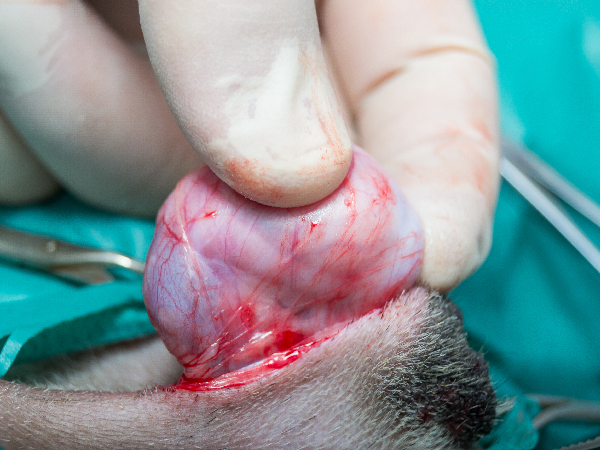
How is a female dog spayed?
Spaying is a little more complicated than castration, and the operation may take up to an hour. Again, your dog will be placed under general anaesthetic. During surgery, your vet will make a small cut into your dog's belly to remove the ovaries and uterus. They will then close the incision with sutures or staples.
Traditionally, dogs are spayed by surgically removing both ovaries and the womb (uterus). To do this, an incision is made down the middle of your dog's stomach, and the surgeon removes the organs. Modern techniques, however, mean there is a new, less intrusive way to spay your dog. Laparoscopic surgery, better known as keyhole, is becoming increasingly popular as it requires smaller incisions through which only the ovaries are removed, and the procedure is often quicker than a traditional spay. In addition, the recovery time is usually slightly quicker for keyhole surgery.
Both techniques are safe, effective, and have the same outcome. Your vet can advise which will work best for you and your dog.
How to prepare your dog for neutering
If you're getting your dog ready for the operation, there are a few things you need to remember.
- Your dog shouldn't eat anything before surgery so their stomach is empty. Your veterinary team will advise you when to take the food bowls away. You can still give your dog water up to around three hours before the surgery
- If your dog hasn't been feeling well, let your vet know so they can check if your dog is healthy enough for the operation
- If your dog is a bit dirty, give them a bath before the op to make it easier for the vet team to operate
- If your dog is female, the operation must be performed when they aren't in season or false pregnancy. If your dog is coming into season, producing milk or has any signs of an active hormonal cycle, the spay may be delayed until safer.
What happens during a dog neutering operation?
Once you've left your dog with the vet, they will:
- Give them a mild sedative and pain relief to help them relax before settling them in a kennel
- Administer a general anaesthetic and attach them to monitoring equipment
- Clean and shave your dog's belly. This creates a sterile space for the surgeon to operate and reduces the likelihood of contamination or infection
- Your dog is continuously monitored under anaesthesia whilst the surgeon removes the reproductive organs and closes the incisions
- Your dog is woken from the anaesthetic and carefully watched in recovery
- Further pain relief is given as necessary.
- After the operation, your dog will be moved back to their kennel and watched until they wake up. The vet may also offer your dog a small meal. Generally, your dog will be ready to go home after a few hours.
Recovery from neutering
Recovery from dog neutering varies, but it's normal if your pet appears drowsy or slow for a few hours post-surgery. Once the anaesthetic wears off, they will bounce back to their usual selves.
Despite seeming eager to play and run, ensure they rest and recuperate for at least seven to ten days, perhaps longer, allowing the wound and stitches to heal and prevent complications. Don't allow dogs to run, jump, lick at their stitches or play roughly during this time.
After surgery, your dog will wear a cone or body suit to protect the wound and signal to other dog owners that they've had an operation. For your dog's safety, it's crucial to keep them on a lead during walks, refrain from play dates with other dogs, and confine them to one room or a crate at home.
This is only a temporary measure. Following a successful check-up and clearance from the vet, they can resume their usual activities.
Check-ups
Your dog will undergo a post-surgery check-up two to three days and again seven to ten days post-operation, allowing the vet to assess the wound, confirm proper healing, and advise when off-lead activities can resume. Any external stitches will be removed at this second appointment.
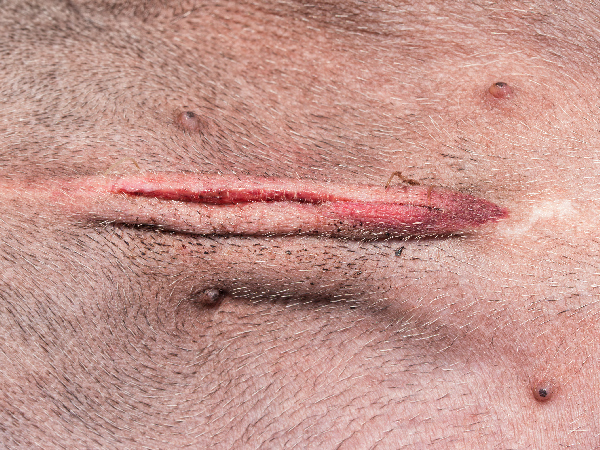
Preparing for your dog's procedure
| Before the procedure | After the procedure | Why use a medical shirt? |
|---|---|---|
|
|
|
What are the benefits of neutering your dog?
Neutering has many benefits for both male and female dogs.
The benefits of castrating a male dog include:
- Removes the risk of testicular cancer, which is the second most common cancer in unneutered dogs
- Diminishes sexual drive, curtailing roaming behaviours
- Extends life expectancy compared to unneutered counterparts
- Reduces the risk of hormone-related diseases, including tumours
- Lessens the likelihood of prostate problems
The benefits of spaying a female dog include:
- Prevention of unwanted pregnancies
- Prevents seasons, and therefore the behavioural and practical considerations these bring
- Prevents pyometra, which is an infection of the uterus and can be fatal
- Eliminates the risk of ovarian or uterine cancer
- Reduces the risk of mammary (breast) cancer if spayed early
- Stops fake pregnancies
Side effects of neutering your dog
After your dog has been neutered, you may see some side effects. These can include:
- Lethargy, reluctance to eat, or mild tummy upsets. These can be normal, although if they continue for more than 24 hours, contact your vet
- Poorly healed wounds caused by licking, over-exercising or knocking the wound
Some other long-term effects may arise after neutering, such as:
Weight gain
Neutering can slow your dog's metabolism and lead to weight gain, particularly in overfed and under-exercised dogs. After neutering, many dogs will need to move to a lighter diet or reduce their feeding amount slightly. A balanced diet and regular exercise are important to prevent obesity post-neutering. If you'd like to know more about how and what to feed your dog after neutering, speak to a member of your veterinary team.
Orthopaedic issues
Early neutering has been associated with an increased risk of various joint disorders in larger breeds. One study indicated that Golden Retrievers neutered before six months were particularly susceptible.
Cancer
Some types of cancers, such as bone cancer, are more prevalent in neutered dogs. However, others, such as mammary, ovarian and testicular cancers, are obviously reduced.
Incontinence
There is an increased risk of urinary incontinence in spayed dogs. While this is rare, if it occurs, it will last a lifetime, although it can be managed with care and medication.
When to get your dog neutered
The best time to neuter your dog can differ depending on many things, including their sex, breed, size and temperament. It's important to chat with your vet to decide the right time.
Smaller dogs can be neutered when they're around six months old. For female dogs, you could consider getting them spayed before their first heat cycle. Large breed dogs are generally neutered later, as they take longer to mature and reach full body size.
The timing of neutering for female dogs also depends on their heat cycle. The best time to spay is around three months after a season when hormone levels are low, and your dog's uterus is in a resting state. Spaying whilst in heat can lead to ongoing hormonal problems.
Signs your dog needs to be neutered
Roaming
Unneutered dogs often wander or go looking for a mate. This happens because male dogs have a great sense of smell and can sense a female dog is in heat from up to three miles away. When an unneutered dog smells a female dog in this state, they often stop thinking clearly and do everything they can to find her, even travelling far away.
Struggle with their seasons
Female dogs who haven't been spayed will go through their heat cycle every six months or so, and each cycle lasts around three weeks. During this time, they can become depressed, lethargic or aggressive. They will also need careful supervision to avoid unwanted matings. If this is the case for your dog, spaying her may be the best option.
Daycare requirements
Most doggy daycare will ask for dogs above six months to be neutered. This is for a variety of reasons and can vary from site to site.
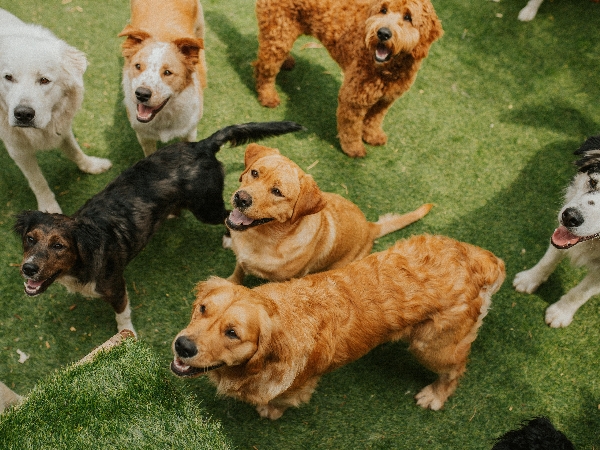
How much does it cost to neuter a dog?
The cost of neutering your dog will depend on:
- Gender of the dog, with spaying being more expensive than neutering
- Size and weight of your dog
- Your practice
- Type of treatment, i.e. laparoscopic vs traditional spay
Research has shown it can cost between £200 and £300 to neuter your dog, with the national average neutering a dog being £221.12 and the average cost to spay your dog £299.22.
Alternative options for neutering
If you're worried about surgically neutering your dog or aren't sure whether neutering is right for you, there are other options. Chemical castration is a temporary option for males. The procedure is similar to microchipping, with a small implant placed under your dog's skin which releases a synthetic hormone, suppressing testosterone. And because it lasts 6-12 months, it's a great, reversible option for those who aren't sure about neutering.
Chemical castration has numerous benefits, including:
- It's temporary, so you can choose not to replace it if it doesn't suit your dog
- Cheaper than surgical neutering (although not permanent)
- No surgery, so no anaesthesia
- Speedy recovery time
- Effective
However, like all options, it does have some downsides, such as the possibility of permanent hormonal changes.
Whether chemical neutering is an option for you will decide on many factors, and you should discuss all your options with your vet.
Studies into dog neutering
Another study found a positive relationship between neutering and life expectancy in dogs, with the dog's lifespan increasing by 13.8% in neutered dogs compared with intact males. This was even higher in spayed dogs, 26.3%, compared with intact females. In this study, neutered dogs were less likely to die of infectious disease, trauma, vascular disease and degenerative disease but more likely to die from neoplastic and immune-related diseases than entire dogs.
Common questions about dog neutering
Do male dogs change after being neutered?
It depends. Dogs are individuals, and some will show more hormone-related behaviours than others. In most cases, training and socialisation will have far greater effects than neutering, and core temperament traits will remain the same.
How soon can I walk my dog after neutering?
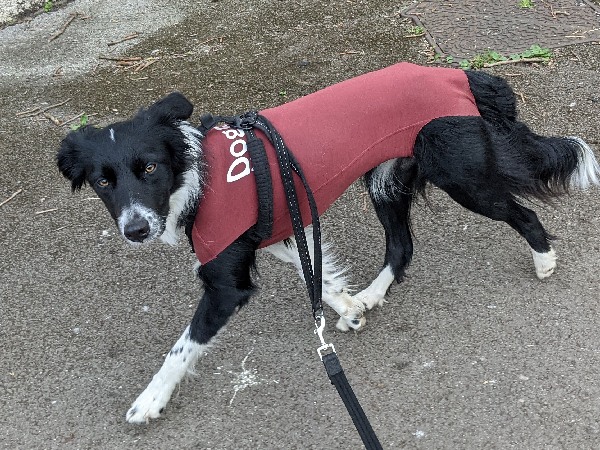
You can generally walk your dog a few days after their operation. Ensure you start small and slow, and keep them on the lead and away from other, more boisterous dogs. Brain games, puzzles and indoor training can be beneficial to keep them occupied during recovery if you have a high-energy dog, such as a Border Collie or Golden Retriever.
How do I comfort my dog after neutering?
Ensure they have a quiet space to rest when you bring them home from the vet. This could be a crate or room to themselves. Try to keep other pets away for the first few hours. Make sure you don't let your dog run or jump around. Reassure them if they seem confused or disoriented, and offer small meals and fresh water regularly.
Need more advice on dog neutering?
For expert advice on dog castration and dog spaying, contact your local vet. Find your nearest vet using our Find a Vet page, or speak to a vet online using Online Vets.
